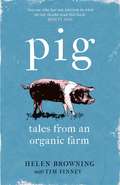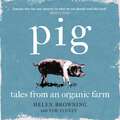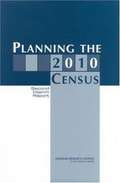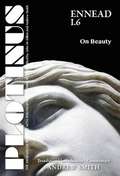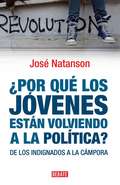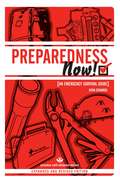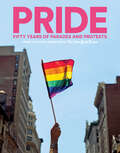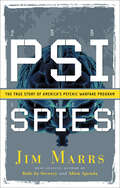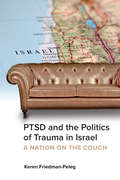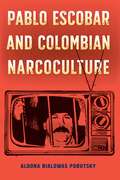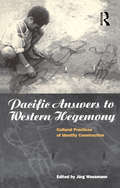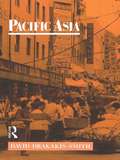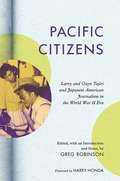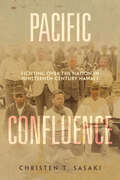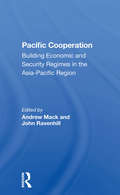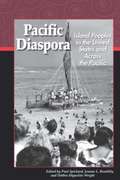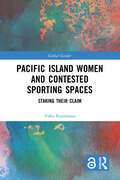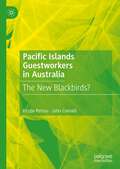- Table View
- List View
PIG: Tales from an Organic Farm
by Helen Browning Tim FinneyWhat is it about the humble pig that holds such a special place in our hearts?In a frosty field on the longest night of the year, eight little piglets snuffle their first breaths, and jostle close to their mother to feed...So begins the life of the farm animal that you think you already know. But think again... This is the magical account of the life and times of a gang of Saddleback pigs, from one of the most forward-thinking organic farmers in the United Kingdom.Helen Browning shines a light on the secret lives of these mischievous, intelligent, and inventive animals - and shares her vision for the future of ethical farming.If you liked The Secret Life of Cows and A Shepherd's Life, you'll love this evocative and illuminating tale...What people are saying about Helen:'A woman who won't be cowed in the war against titan farms' - Independent'Pioneering' - Guardian
PIG: Tales from an Organic Farm
by Helen Browning Tim FinneyWhat is it about the humble pig that holds such a special place in our hearts?In a frosty field on the longest night of the year, eight little piglets snuffle their first breaths, and jostle close to their mother to feed...So begins the life of the farm animal that you think you already know. But think again... This is the magical account of the life and times of a gang of Saddleback pigs, from one of the most forward-thinking organic farmers in the United Kingdom.Helen Browning shines a light on the secret lives of these mischievous, intelligent, and inventive animals - and shares her vision for the future of ethical farming.If you liked The Secret Life of Cows and A Shepherd's Life, you'll love this evocative and illuminating tale...What people are saying about Helen:'A woman who won't be cowed in the war against titan farms' - Independent'Pioneering' - Guardian(P)2018 Headline Publishing Group Ltd
PLANNING THE 2010 CENSUS: Second Interim Report
by Panel on Research on Future Census MethodsA report on Planning the 2010 Census
PLOTINUS Ennead I.6: Translation with an Introduction and Commentary
by Andrew SmithEnnead I.6 is probably the best known and most influential treatise of Plotinus, especially for Renaissance artists and thinkers. Although the title may suggest a work on aesthetics and thus of limited focus, this is far from the case. For it quickly becomes apparent that Plotinus’ main interest is in transcendent beauty, which he identifies with the Good, the goal of all philosophical endeavor in the Platonist’s search to assimilate himself with the divine. <p><p> The treatise is at once a philosophical search for the nature of the divine and at the same time an encouragement to the individual to aspire to this goal by taking his start from the beauty which is experienced in this world; for it is an image of transcendent beauty. This upward movement of the treatise reflects throughout the speech of Socrates in Plato’s Symposium in which he recounts the exhortation of the priestess Diotima to ascend from earthly to transcendent beauty, which for Plotinus is identified with the divine.
POR QUE LOS JOVENES ESTAN... (EBOOK)
by Jose NatansonLos indignados españoles que protestan contra el ajuste, los rebeldes árabes que voltean dictaduras, los estudiantes chilenos que reclaman un cambio en el modelo educativo, los jóvenes argentinos que se suman a los círculos militantes del kirchnerismo. La reactivación política de los jóvenes es una de las grandes novedades del siglo XXI. Este libro es un relato en caliente de esta nueva "revolución de los jóvenes" y un análisis de sus causas profundas. En particular, la frustración de una juventud cada vez más educada e informada que, sin embargo, tiene que lidiar con trabajos precarios y mal pagos, lo que genera una brecha entre posibilidades y oportunidades que deriva en bronca pero también en una sorprendente repolitización. Por qué los jóvenes están volviendo a la política? ofrece las primeras claves para comprender una tendencia global que tiene en la Argentina un reflejo particular: la juventud kirchnerista, con La Cámpora como actor principal, funciona como una síntesis de las principales virtudes del gobierno tanto como de sus indisimulables defectos. Se trata, en todo caso, de un fenómeno de masas inédito desde la recuperación de la democracia. En un estilo personalísimo, que combina la cita académica con la referencia pop, el análisis estadístico con fragmentos de canciones, el dato histórico con la anécdota, José Natanson ofrece un análisis apasionante y a la vez profundo del resurgimiento juvenil.
PR-Perspektiven: Reflexionen zur Theorie der Praxis
by Lars Rademacher Peter SzyszkaMit seinen Beiträgen wendet sich der Band bewusst gegen Mainstream-Positionen in Wissenschaft und Praxis rund um Public Relations. Die teilweise essayistische Form der Beiträge wurde bewusst gewählt, um einen kreativeren Umgang der Mitwirkenden mit ihren jeweils ausgewählten Gegenständen zu erleichtern. Die Auswahl orientiert sich an Themenfeldern, die in enger Verbindung mit dem Wirken von Klaus Kocks zwischen Wissenschaft und Praxis stehen.Herausgekommen sind zwölf theoretische Reflexionen von Praxis, die der Provokation des Einleitungsbeitrages folgend bekannte Themen neu oder anders denken und deren Durchdringung in weiterführenden Diskussionen herausfordern.
PREPAREDNESS NOW!
by Aton EdwardsIn uncertain times, a solid preparedness plan is essential for every individual and family. PREPAREDNESS NOW! navigates the new realities of twenty-first century living: extreme weather, economic instability, terror attacks, and more.Packed with checklists, resources, and step-by-step instructions, PREPAREDNESS NOW! details everything needed for office, car, and home preparedness. This newly expanded and revised edition includes an extended chapter on food and water storage and urban gardening, techniques in personal defense, and the latest and best preparedness products on the market. This book encourages basic lifestyle changes that lead to a more self-sufficient and satisfying existence, regardless of circumstance.PREPAREDNESS NOW! is written by one of the most experienced preparedness experts in the field. Aton Edwards is executive director of the International Preparedness Network (IPN) and has worked with the Red Cross, NYPD, Center for Disease Control, and thousands of people domestically and overseas.This manual delivers practical advice on: Building your emergency kits for home, car, and office Water quality control and storage Emergency shelter, power, lighting, and heating Emergency transportation, communications, and evacuation Extreme weather preparedness Chemical, biowarfare, and nuclear preparedness Defense against infectious diseases Personal defense and crime prevention for the twenty-first century home
PRIDE: Fifty Years of Parades and Protests from the Photo Archives of the New York Times
by Adam Nagourney The New York TimesA stunning fifty-year visual history of LGBTQ pride marches, parades, and protests, taken from the New York Times photo archives.It began in New York City on June 28, 1969. When police raided the Stonewall Inn—a bar in the Greenwich Village neighborhood, known as a safe haven for gay men—violent demonstrations and protests broke out in response. The Stonewall Riots, as they would come to be known, were the first spark in the wildfire that would become the LGBTQ rights revolution. Fifty years later, the LGBTQ community and its supporters continue to gather every June to commemorate this historic event. Here, collected for the first time by The New York Times, is a powerful visual history of five decades of parades and protests of the LGBTQ rights movement. These photos, paired with descriptions of major events from each decade as well as selected reporting from The Times, showcase the victories, setbacks, and ongoing struggles for the LGBTQ community.“To take in the breadth of [PRIDE’s] contents—to see the scope of LGBTQ+ rights, from the first Christopher Street Day march in 1970 to protests for transgender rights just last year—is to witness the power of visibility firsthand.” —them.“This book is a powerful visual history of five decades of parades and protests for equality. Educational and visually enriching, complete with photos from The New York Times, this book is the perfect companion for any coffee table.” —BookTrib
PSI Spies: The True Story of America's Psychic Warfare Program
by Jim Marrs“In PSI Spies, Jim Marrs has provided the original report on the U.S. Army’s use of psychic remote viewing as an intelligence tool.” —Whitley StrieberLearn the Truth About Our Military’s Psychic SoldiersPSI Spies takes you behind the scenes of the US Army’s formerly top-secret remote viewing unit to see how the military has used this psychic ability as a tool and a weapon. Even though remote viewing was developed by various tax-supported government agencies, including the CIA, most Americans have never heard of this faculty.In the 1970s, with the support of Congress, the Army formed a small unit of remote viewers to spy for America. These soldiers/psychic spies gained penetrating knowledge about a wide variety of subjects. They were consulted to stop a Soviet plot to kill President Ronald Reagan. They mentally prowled the halls of the Kremlin. They probed Iraq’s hidden weapons sites in preparation for the 1991 Gulf War.From insights into our future to the continuing mysteries of UFOs and crop circles, no subject has been immune to the military remote viewers—America’s Psi Spies. And now, in this book, you can also find tips on how to remote view on your own.Praise for PSI Spies“PSI Spies is one of the best books ever written about the U.S. government’s top-secret psychic warfare unit. Marrs introduces us to all involved in this covert project and gives a detailed view of the benefits and limitations of applied remote viewing. I highly recommend it.” —Simeon Hein, PhD, author of Opening Minds“Marrs uses his impressive investigative skills and impeccable research to delve into the shadowy world of remote viewing and psychic spying as a form of intelligence gathering. Marrs presents compelling and thorough documentation of the classified quest of the U.S. government to understand the mysterious world of “psi” and turn it to their military advantage. Both provocative and highly entertaining, PSI Spies proves that our government takes paranormal phenomena far more seriously than we’ve ever been led to believe. Another must-read book by an author who is never afraid to dig deep for, and expose, the truth.” —Marie D. Jones, author of PSIence: How New Discoveries in Quantum Physics and New Science May Explain the Existence of Paranormal Phenomena
PTSD and the Politics of Trauma in Israel: A Nation on the Couch
by Hebrew University Magnes Press Keren Friedman-PelegPost-Traumatic Stress Disorder, or PTSD, has long been defined as a mental trauma that solely affects the individual. However, against the backdrop of contemporary Israel, what role do families, health experts, donors, and the national community at large play in interpreting and responding to this individualized trauma? In PTSD and the Politics of Trauma in Israel, Keren Friedman-Peleg sheds light on a new way of speaking about mental vulnerability and national belonging in contemporary Israel. Based on ethnographic fieldwork conducted at The Israel Center for Victims of Terror and War and The Israel Trauma Coalition between 2004 and 2009, Friedman-Peleg’s rich ethnographic study challenges the traditional and limited definitions of trauma. In doing so, she exposes how these clinical definitions have been transformed into new categories of identity, thereby raising new dynamics of power, as well as new forms of dialogue.
Pablo Escobar and Colombian Narcoculture (Reframing Media, Technology, and Culture in Latin/o America)
by Aldona Bialowas PobutskyHow the legacy of Pablo Escobar inspired the development of narcoculture in Colombia and around the world In the years since his death in 1993, Colombian drug lord Pablo Escobar has become a globally recognized symbol of crime, wealth, power, and masculinity. In this long-overdue exploration of Escobar’s impact on popular culture, Aldona Bialowas Pobutsky shows how his legacy inspired the development of narcoculture—television, music, literature, and fashion representing the drug-trafficking lifestyle—in Colombia and around the world. Pobutsky looks at the ways the “Escobar brand” surfaces in bars, restaurants, and clothing lines; in Colombia’s tourist industry; and in telenovelas, documentaries, and narco memoirs about his life, which in turn have generated popular interest in other drug traffickers such as Griselda Blanco and Miami’s “cocaine cowboys.” Pobutsky illustrates how the Colombian state strives to erase his memory while Escobar’s notoriety only continues to increase in popular culture through the transnational media. She argues that the image of Escobar is inextricably linked to Colombia’s internal tensions in the areas of cocaine politics, gender relations, class divisions, and political corruption and that his “brand” perpetuates the country’s reputation as a center of organized crime, to the dismay of the Colombian people. This book is a fascinating study of how the world perceives Colombia and how Colombia’s citizens understand their nation’s past and present. A volume in the series Reframing Media, Technology, and Culture in Latin/o America, edited by Héctor Fernández L’Hoeste and Juan Carlos Rodríguez
Pablo Remembers: The Fiesta of the Day of the Dead
by George AnconaFrom October 31 to November 2, people in Mexico celebrate the festival of el Dia de Los Muertos, the Day of the Dead. This photodocumentary follows Pablo and his family as they prepare to honor the memory of Pablo's grandmother. "This intriguing book makes an excellent offering during the Halloween season."--School Library Journal. Also available in a Spanish Language edition, Pablo Recuerda.
Pacemaker Careers
by FearonPacemaker Careers is a comprehensive program that explores 21-century career clusters and helps students build the workplace readiness skills they need for a successful transition to the world of work. Presented in a consistent and accessible format, this program will engage your students interest in today s opportunities through full-color pictures, charts, and diagrams that support visual learning.
Pachangas: Borderlands Music, U.S. Politics, and Transnational Marketing
by Margaret E. DorseyA uniquely Tejano version of the old-fashioned political barbeque, the traditional South Texas pachanga allowed politicians to connect with voters in a relaxed setting where all could enjoy live music and abundant food and drink along with political speeches and dealmaking. <P><P>Today's pachanga still combines politics, music, and votes--along with a powerful new element. Corporate sponsorships have transformed the pachanga into a major marketing event, replete with celebrity performers and product giveaways, which can be recorded and broadcast on TV or radio to vastly increase the reach of the political--and the commercial--messages.
Pacific Answers to Western Hegemony: Cultural Practices of Identity Construction
by Jürg WassmannThe destruction of local identity through the relentless encroachment of a 'McDonald-ized' cultural imperialism is a global phenomenon. Yet the reactions of Pacific peoples to this Western hegemony are diverse and encourage the creation of independent cultural identities through sports and games, political mediations, tourism, media and filmmaking, and the struggles for land rights and titles, particularly in Australia.This book, based on extensive fieldwork, addresses a subject of great immediacy to peoples of the Pacific Island nations. It fills an important gap in existing ethnographic literature on the region and confidently navigates what had previously been considered uncharted, even unchartable, waters -- that wide sea between the classic ethnography of Oceania and contemporary anthropology's theoretical concerns with global relations and transnational cultures. Its breadth, rigour, and timely contribution to post-colonial politics in Oceania are certain to ensure that this book will provide an enduring contribution to the field.
Pacific Asia (Routledge Introductions to Development)
by David W. Drakakis-SmithPacific Asia - from Burma to Papua New Guinea to Japan - is the most dynamic and productive region in the developing world, the result of an economic explosion fuelled by industrial activity. This is where the Green Revolution began, where more women are employed in factory work than anywhere alse; the region is also the most predominately socialist in the Third World. David W. Smith assesses Pacific Asia both in terms of its historical development and the present global system, placing general development issues in their local contexts. The book will be an invaluable introduction to the region.
Pacific Centuries: Pacific and Pacific Rim Economic History Since the 16th Century
by A.J.H. Latham Lionel Frost Dennis O. FlynnStarting with the 16th century trade of Latin American silver and Chinese silk, leading researchers trace the economic, environmental and social history of the Pacific region. Chapters examine the trade of diverse commodities within the Pacific and analyse the ecological and social impacts of this increasing economic activity. The strong Chinese ma
Pacific Citizens: Larry and Guyo Tajiri and Japanese American Journalism in the World War II Era
by Greg Robinson Harry HondaOffering a window into a critical era in Japanese American life, Pacific Citizens collects key writings of Larry S. Tajiri, a multitalented journalist, essayist, and popular culture maven. He and his wife, Guyo, who worked by his side, became leading figures in Nisei political life as the central purveyors of news for and about Japanese Americans during World War II, both those confined in government camps and others outside. The Tajiris made the community newspaper the Pacific Citizen a forum for liberal and progressive views on politics, civil rights, and democracy, insightfully addressing issues of assimilation, multiracialism, and U.S. foreign relations. Through his editorship of the Pacific Citizen as well as in articles and columns in outside media, Larry Tajiri became the Japanese American community's most visible spokesperson, articulating a broad vision of Nisei identity to a varied audience. In this thoughtfully framed and annotated volume, Greg Robinson interprets and examines the contributions of the Tajiris through a selection of writings, columns, editorials, and correspondence from before, during, and after the war. Pacific Citizens contextualizes the Tajiris' output, providing a telling portrait of these two dedicated journalists and serving as a reminder of the public value of the ethnic community press.
Pacific Confluence: Fighting over the Nation in Nineteenth-Century Hawai'i (American Crossroads #69)
by Christen T. SasakiThe 1898 annexation of Hawaiʻi to the US is often framed as an inevitable step in American expansion—but it was never a foregone conclusion. By pairing the intimate and epic together in critical juxtaposition, Christen T. Sasaki reveals the unstable nature not just of the coup state but of the US empire itself. The attempt to create a US-backed white settler state in Hawaiʻi sparked a turn-of-the-century debate about race-based nationalism and state-based sovereignty and jurisdiction that was contested on the global stage. Centered around a series of flash points that exposed the fragility of the imperial project, Pacific Confluence examines how the meeting and mixing of ideas that occurred between Hawaiians and Japanese, white American, and Portuguese transients and settlers led to the dynamic rethinking of the modern nation-state.
Pacific Cooperation: Building Economic And Security Regimes In The Asia-pacific Region
by Vinod Aggarwal John Ravenhill Paul M Evans Pauline KerrLong divided by cultural, economic, and political differences, the Asia-Pacific region has little history of multilateral cooperation. Alliances that once linked individual countries with one or the other superpower fostered deep mistrust among neighbouring states. The end of the Cold War, however, has created new opportunities for multilateral coo
Pacific Crossing
by Elizabeth SinnDuring the nineteenth century tens of thousands of Chinese men and women crossed the Pacific to work, trade, and settle in California. Drawn initially by the gold rush, they took with them skills and goods and a view of the world which, though still Chinese, was transformed by their long journeys back and forth. They in turn transformed Hong Kong, their main point of embarkation, from a struggling infant colony into a prosperous international port and the cultural center of a far-ranging Chinese diaspora. Making use of extensive research in archives around the world, Pacific Crossing charts the rise of Chinese Gold Mountain firms engaged in all kinds of transpacific trade, especially the lucrative export of prepared opium and other luxury goods. Challenging the traditional view that the migration was primarily a "coolie trade," Elizabeth Sinn uncovers leadership and agency among the many Chinese who made the crossing. In presenting Hong Kong as an "in-between place" of repeated journeys and continuous movement, Sinn also offers a fresh view of the British colony and a new paradigm for migration studies.
Pacific Diaspora: Island Peoples in the United States and Across the Pacific
by Paul Spickard Joanne L. Romdilla Debbie Hippolite WrightThe Samoas, Tonga, and Hawai'i receive the greatest focus in this collection of essays, but the overall range is quite broad. Native writers cover various topics, such as history, cultural mores, adapting to changes in language and cultures as they move, the ongoing questions and dynamics of personal identity as emigration from the homeland occurs, questions about the future of indigenous cultures, and more. Includes a detailed bilbliography.
Pacific Island Women and Contested Sporting Spaces: Staking Their Claim (Global Gender)
by Yoko KanemasuThis book focuses on the variety of strategies developed by women athletes in the Pacific Islands to claim contested sporting spaces – in particular, rugby union, soccer, beach volleyball, recreational sports and exercise – as a prism to explore grassroots women’s engagement with heavily entrenched postcolonial (hetero)patriarchy. Based on primary research conducted in Fiji, Samoa, Solomon Islands, and Vanuatu, the book investigates contested sporting spaces as sites of infrapolitics intersected primarily by gender and also by other markers of inequality, including ethnicity, sexuality, class and geopolitics. Contrary to historical and contemporary representations of Pacific Island women as victims of gender injustice, it explores how these athletes and those who support them actively carve out space for their transformative agency. Pacific IslandWomen and Contested Sporting Spaces: Staking Their Claim focuses on a region underexamined by sport or gender studies researchers and will be of key interest to scholars and students in Gender Studies, Sport Studies, Sociology and Pacific Studies as well as sport practitioners and policymakers.
Pacific Islands Guestworkers in Australia: The New Blackbirds?
by John Connell Kirstie PetrouThis is the first book to examine the contemporary seasonal migration of Pacific Islanders to Australia through the Seasonal Worker Program (SWP). It reflects on this new age of guestwork from a broad social, economic, political and cultural perspective in both source countries and destinations. In so doing, it offers a critical perspective on different phases of managed labour migration from nineteenth century practices of ‘blackbirding’ to the present day. This book examines why and how guestworker policies and programmes have developed, and the impact this has had in Australia and for the people, villages and islands of the sending states. It particularly focuses on Vanuatu, the main source of labour, and draws upon studies based in Australia, Vanuatu and other Pacific Island countries. The book therefore traces new patterns of migration, with intriguing economic and social consequences, that are restructuring parts of rural and regional Australia in response to labour demands from agriculture and evolving regional geopolitics.
